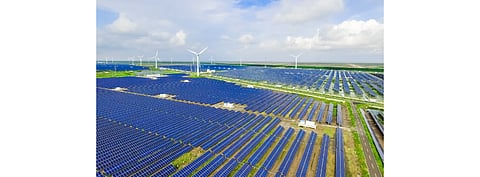

The United Nations (UN) calculates well over 5,000 GW of additional renewable energy capacity for the world by 2030, thanks to commitments made under 150+ Energy Compacts announced at its High-level Dialogue on Energy (HLDE) event. What's more, the Energy Compacts also include commitments to save energy close to over 7,000 GW through energy efficiency measures.
According to the UN, 698 GW of additional renewable energy capacity comprising solar, wind, geothermal, hydro and renewables-based hydrogen is expected to be installed by 2030 as committed by national governments. This includes commitments as UAE's target to generate 2.5 GW from solar energy for the building sector, and 450 GW of renewable energy for India.
Another 823 GW has been pledged by businesses, 'notably power utilities' over the next 10 years, including Italy's Enel that plans to phase out coal by 2027 and triple its renewable energy generation portfolio to 145 GW.
At the same time, an additional 3,500 GW of renewables is to be mobilized by several partnerships and industry associations, for instance the partnership between Rockefeller Foundation and IKEA Foundation (see $1 Billion Partnership For Distributed Renewable Energy).
These commitments comprise 268 GW of renewable energy capacity and 129 GW of new electrolyzer capacity, leading to the generation of over 25 million tons of green hydrogen by 2030.
All in, these commitments represent more than $400 billion in new finance and investments by governments and private sector.
Beyond these, the UN expects additional Energy Compacts to be registered in the months ahead as the world gets ready for the November Climate COP 26. The 1st leader-level meeting on energy under the UN General Assembly in 40 years, the dialogue will lead to the creation of a global roadmap for actions and timelines needed to meet the commitments by 2030.
It added that annual reporting through a publicly transparent online database will help track progress on the compacts through 2030.
Details of the commitments under Energy Compacts are listed by the UN on its website.
One of the Energy Compacts formed is the No New Coal Power Compact with 7 countries in it (see Coal Power's Clout Diminishing).
Calling for the world to close the energy access gap by 2030, UN Secretary General Antonio Guterres said, "That means cutting in half the number of people without access to electricity by reaching 500 million people by 2025. And it means providing over 1 billion people with access to clean cooking solutions by 2025."
.png?w=50&fm=png)